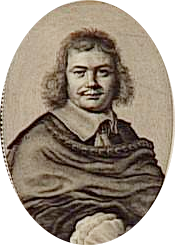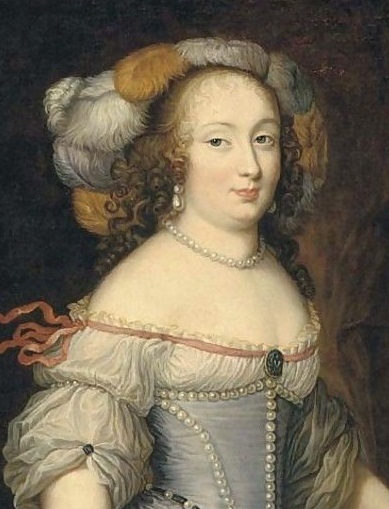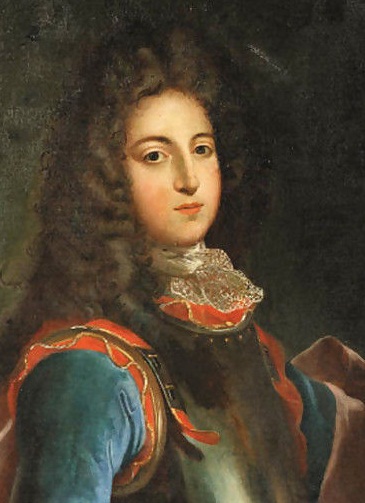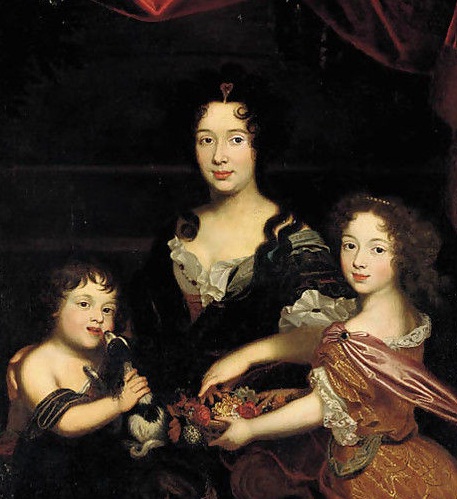<Back to Index>
- Architect Antoine Lepautre, 1621
- Painter and Architect Pierre II Mignard, 1640
PAGE SPONSOR

Antoine Lepautre or Le Pautre (1621 – 1679) was a French architect and engraver. Born in Paris, he was the brother of the prolific and inventive designer - engraver Jean Lepautre. Antoine Lepautre has been called " "one of the most inventive architects of the early years of Louis XIV's reign". He was a protégé of Cardinal Mazarin, to whom he dedicated his Desseins de plusieurs palais (Paris, 1652/3), in which his imagination is given free rein.
In 1646 – 1648, Lepautre built a chapel for the Jansenist Convent of Port - Royal at Paris.
His Hôtel de Beauvais (1655 – 1660), rue François - Miron, built for Pierre de Beauvais and his wife Catherine Henriette Bellier, première dame de chambre to Anne of Austria, brought Lepautre celebrity for the ingenious way he made use of a highly irregular parcel of land, ranging his structure round an oval court. The Hôtel de Beauvais's architectural qualities were noted by Bernini during his Paris sojourn, and it remains Lepautre's outstanding surviving monument.
He built the Château du Vaudreuil (Eure) in 1658 – 1660.
In 1660 Lepautre was appointed house architect to Philippe I, Duke of Orléans, the brother of Louis XIV. In this quality he built the wings for the lost Château de Saint - Cloud and constructed the celebrated Grand Cascade that survives in its park.
Drawings conserved in the Swedish National Museum of Fine Arts, Stockholm, demonstrate that Lepautre was the designer of stables for Jean - Baptiste Colbert at the Château de Sceaux, in the early 1670s.
Madame de Montespan commissioned him to make plans for her Château de Clagny, close to Versailles; the unfinished project was completed after Lepautre's death by Jules Hardouin - Mansart. For Antoine Nompar de Caumont, duc de Lauzun, Lepautre built the Hôtel de Lauzun at Saint - Germain - en - Laye.
In 1671 he was made a member of the Académie Royale d'Architecture.
Pierre II Mignard (1640 - 1725 to Avignon ), called "the knight Mignard", painter and architect.
Son of French painter and
engraver Nicolas
Mignard and
nephew of the painter Pierre
Mignard.
Eldest son of the painter Nicolas "Mignard d'Avignon", Pierre II Mignard was born in that city on 20 February 1640. After studying at the Jesuit college, he accompanied in 1658 his uncle and namesake Pierre 'Mignard the Roman", who returned from Rome to Paris and visited for a few months with his brother.
In Paris, Pierre II quickly obtained a patent as a painter of the Queen (1662), and assisted his father, whom Louis XIV called in the capital, for the decoration of the small apartment of the King at the Tuileries Palace. It was he who completed the important cycle of paintings on the theme of Apollo after the death of his father in 1668. The following year he was appointed by Colbert to lift plans and drawings of the antiquities of Provence. When he completed this work, Colbert was sent to Italy for a study tour of several months with his own son, the Marquis de Seignelay, and the mathematician and architect François Blondel. Back in Paris, on 31 December 1671 he was among the six founders of the Royal Academy of Architecture.
For some reason, Mignard left the capital in spring 1679 and moved back to Avignon, where he implemented his double talent as a painter and architect. There he built mansions, public buildings and many religious buildings, some of which he decorated with his paintings. In a city where architecture was still dominated by artists of the previous generation, as,e.g., Louis - Francois de Royers of Valfenière, he introduced majesty and nobility.
One of his most notable projects is the Montmajour Abbey, where he built from 1703 a new building for the Congregation of St. Maur. His project was extremely innovative and ambitious, not fully carried out, and it was partially unfinished and destroyed during the Revolution at the end of the century, thus depriving us of a remarkable milestone and a sample of the very early evolution of monastic architecture in the 18th century.
In 1701, thanking him for the services rendered to the vice legation by mediating disputes with the king's officers about the levees of the Rhone, the Pope made him a knight of the Order of Christ.
While his activity was barely slowed by
age, Mignard was a victim in 1716 of a
stroke that left him for some time hemiplegic and
abruptly interrupted his career. He
died in 1725 and was
buried in the church of St. Agricola of Avignon where
his tomb still lies. Besides his medallion portrait,
we see a long epitaph that recalls his many titles and
his artistic affiliation.


